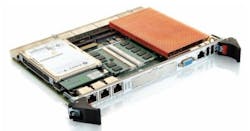Control software for the Lockheed Martin Sippican EMATT runs on a Windows PC or laptop computer, and can program the target's course, depth, speed, time, and passive tonal changes. The software also can program the EMATT to maneuver automatically in response to active sonar pings.
Lockheed Martin also builds the Submarine Mobile Anti-submarine Warfare Training Target (SUBMATT), which launches from submarine torpedo tubes. Lockheed Martin also builds several recoverable ASW targets, including the Self-Propelled Acoustic Target (SPAT) and the MK 30 Mod 2, for high-fidelity training on and off of acoustic tracking ranges.
Lockheed Martin engineers are designing the latest version of EMATT to be more affordable than previous generations of ASW training targets. The latest version has programmable acoustics, better representation of hostile submarines than previous versions, and acoustic communications links that Navy forces can use in daytime, at night, and in rough seas, company officials say.
Lockheed Martin Sippican will do the work on the latest Navy contract at its 223,000-square-foot facility in Marion, Mass. Sippican designs and builds countermeasure systems, sea-air systems, and underwater vehicles.
For more information contact Lockheed Martin Sippican online at www.sippican.com.



